SUMMARY
This is AI generated summarization, which may have errors. For context, always refer to the full article.

A graphic artist from Pasig City rekindled his fascination with the Pokémon universe by infusing his Filipino roots into his own version of the Pokédex.
The Pokémon fan behind this incredible set of Fakémon is 23-year-old Christopher Jeorge Alejo.
“I drew these Pokemon characters to promote Filipino culture and also raise awareness on endangered animals,” Alejo told Rappler.
Alejo gave further color to his creatures based on Philippine mythological creatures, endangered animals, and plants by incorporating local food and textiles.
Alejo said the Pokémon universe resonated with him because it taught him valuable lessons of friendship and self-confidence.
“Most importantly, it taught me to try to be the very best like no one ever was,” he quipped.
“I started being interested in Pokémon when I was around 7 or 8. My uncle gave me a Game Boy and the game I played was Pokémon Fire Red,” Alejo recalled.
When asked who Ash Ketchum’s Filipino counterpart would be, Alejo said that it would be Juan Huliin, a hardworking Filipino trainer prone to failures but determined to succeed.
He also said he would name the Philippine region Kaisa, a Tagalog word that means unity.
Alejo shared with Rappler the inspiration behind his creations and how aspiring trainers would train if the Kaisa region existed in real life.
Gudile, Crosadok, and Armodoros

Derived from the critically-endangered Philippine crocodile, Gudile is a carefree Pokémon that loves to stroll through forests and fields. Alejo said this character also wears the signature straw hat worn by Filipino farmers called salakol.
As it evolves into Crosadok, the leaf on its chest becomes heavy and detachable, making it its own hat for protection. As Armodoros, this hat is used as a shield that protects against all sorts of attacks.
It can learn Resistant Cover or Steel moves where it increases its Defense (DEF) and Special Defense (SP. DEF) for two turns and blasts all foes with metallic energy that grows as it takes damage while charging.
Antpoi, Solab, and Kidlant

A hybrid between Apolaki, the mythical god of the Sun, and fire ants called hantik, Antpoi acquires lightning speed once it goes through evolution.
It is a careful and smart Pokémon, but is prone to outbursts by nature. The more it grows, the faster it becomes. Upon becoming a Kidlant, it becomes faster and oblivious to enemies, leaving them defenseless.
Alejo told Rappler that this Pokémon can learn Blitzing Sprint, an electric move that allows Kidlant to always attack first and then run around the world just to return back on the next turn. It can also learn skills like burn or paralysis.
Calucalf, Tamahorn, and Karabreak

Inspired by the carabao and the critically-endangered tamaraw, Calucalf is a calm and lazy Pokémon. When it evolves, its body is imprinted with tribal Filipino tattoos.
This Pokémon loves to wallow in natural bodies of water. Its horns grow stronger and its demeanor changes to a more aggressive kind.
As Karabreak, it becomes territorial since it assumes leadership among a sea of Calucalfs and Tamahorns. It also takes care of them by protecting them from harm.
It can learn Dread Horn, a dark type attack that deals more damage if the enemy Pokémon is fairy-type.
Pilandy and Chevorest

Derived from an endangered mammal pilandok, also known as the mouse deer, Pilandy roams the forest and grassy areas around calm and quiet towns.
Once it turns into Chevorest, it protects the forests, fields, and farms, assisting farmers with soil fertility and crop growth.
Legend says they evolved from an ancient species that once roamed the region.
Mayni and Mayala

Based on the maya bird and Filipino textile, Mayni and its evolved kind Mayala are seen everywhere in the region.
This Pokémon flies free and perches on trees and poles. Mayala’s favorite pastime is to zoom through clouds. It also has the hidden ability called Free Wings, allowing it to increase its speed and resist attacks that prevent it from escaping.
Steewilis and Steelapia

Steewilis is based on the endangered tawilis sardine species from Taal, Batangas and the bolo blades.
It is a rowdy Pokémon, always ramming its steel-hard body into things like coral reefs and other aquatic Pokémon in order to become sharper.
Meanwhile, Steelapia is a warrior in spirit. Derived from a mix of the Moro armor and the territorial and prolific mouth-brooder tilapia, this attacks in schools and can decimate an entire group of Sharpedo Pokémon.
Starsier

Inspired by the nearly-threatened primate called the Philippine tarsier, Starsier has a tail likened to a psychic crystal pendulum.
Its big eyes contain the secrets to the universe and gazing into them may hypnotize others.
This Pokémon stores electric energy in its cheeks, allowing it to possess telekinetic abilities and unleash a storm of psionic force during battle.
Foalish and Trikbalang

Based on the unique Filipino mythical creature tikbalang, Trikbalang thrive both in rural and urban landscapes.
This Pokémon leads a pack of Foalish through mountains and streets during the night in order to scare or play distasteful tricks on passersby.
However, they respect formalities, and will happily stop if the passersby asks them permission to get through their territories.
Sproutoo, Bambelle, and Bambakas

Sproutoo, Bambelle, and Bambakas origins sprout from the beautiful Filipino myth of Malakas and Maganda.
The unevolved Sproutoo can be found in groups, waiting for its tough shell to be pecked by bird Pokémon in order to evolve.
The male ones evolve into the tough and tenacious Bambakas, while the female ones evolve into the beautiful and powerful Bambelle.
Twinklish and Butanduin

Twinklish and Butanduin get their physical characteristics from the slow-moving, filter-feeding carpet shark locally known as butanding.
The spots on Twinklish’s black skin turn into beautiful patterns similar to the constellations seen at night.
When schools of Twinklish and Butanduin come out at night, their unique patterns shine and twinkle underneath the sea. This is a sight to behold because they mirror the vast and incredible scene of the night sky.
Insektrawl, Pyroparu, Plasmaparu, and Aquaparu

Like the popular Eevee, the evolutionary variants of Insektrawl are one of their kind.
Once this Tomato Hornworm-based Pokémon eats enough leaves, it will evolve into three different variants depending on the type of flowering plant it has eaten. These variants each represent the colors found in the Philippine flag.
Alejo also said these variants are based on butterfly species found in the Philippines; Red-bodied Swallowtail for Pyroparu, Orange Migrant for Plasmaparu, and White Dragontail for Aquaparu.
Alomixalo

Aloximalo is derived from the popular Filipino cold dessert halo-halo. It lives in the cold mountain ranges of the region.
They usually accompany sorbetes vendors to make ice cream. However, this Pokémon can give off a sweet scent that lures prey, then traps them in ice.
Aloximalo has the ability to Cold Treat, freezing the enemies that bite or drain it with its ice-type damage.
Blakunawa

Its physical characteristics taken from the mythical Filipino moon-eating serpent bakunawa, Blakunawa is a legendary Pokémon feared by the residents of the region.
It is said to be one of the four moon-eating legendary Pokémon that plunged the world into darkness.
It has the move moon devour, a dark-type attack that is super effective against fairy-type Pokémon, Alejo added, “Plus, its other ability called Dark Harbinger makes fairy-type Pokémon useless in battles.”
A career in video games
Forbes reported that Pokémon GO in 2016 is one of the most successful mobile games of all time. It broke records as the fastest to earn $100 million and most-downloaded in its first month of release.
Pokémon Unite, the multiplayer online battle arena video game, was just released by its developers on Wednesday, September 22, and is now available for download.
“I had dreams of playing Pokémon MOBA for a long time. I’ve actually played it on my (Nintendo) Switch but I find my phone to be more accessible since the Switch belongs to my little brother,” Alejo told Rappler.
It is undeniable that Pokémon continues to be one of the most successful franchises in the world since its inception in the early 1980s in Japan.
Like Alejo, fans across the world are still raving for anything Pokémon. The Pokémon fever lives on irrespective of the generation.
Now in his senior year at Mapua University, this Multimedia Arts and Sciences student plans to pursue a career in video game development in the future.
“My dream job is to be a video game character designer. So I’m planning to learn how to be one,” Alejo said.
The artist from Pasig has created other incredible art pieces inspired by Filipino culture. If anyone is interested in commissioning him for artwork, you may reach him on Twitter, Instagram, and Tumbler. – Rappler.com
Add a comment
How does this make you feel?
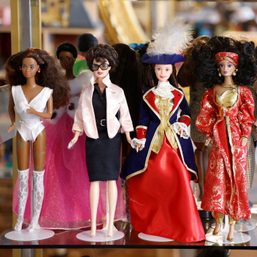
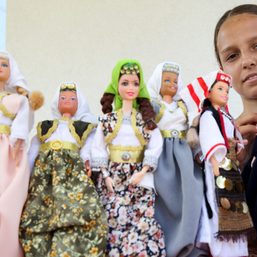



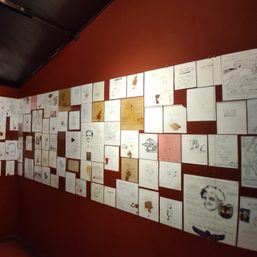



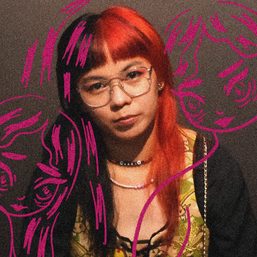



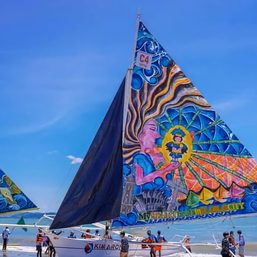
![[The Slingshot] No, no, no, National Museum! The Boljoon artifacts do not belong to you!](https://www.rappler.com/tachyon/2024/02/tl-boljoon-artifacts-nat-museum-02242024.jpg?resize=257%2C257&crop=270px%2C0px%2C720px%2C720px)
There are no comments yet. Add your comment to start the conversation.